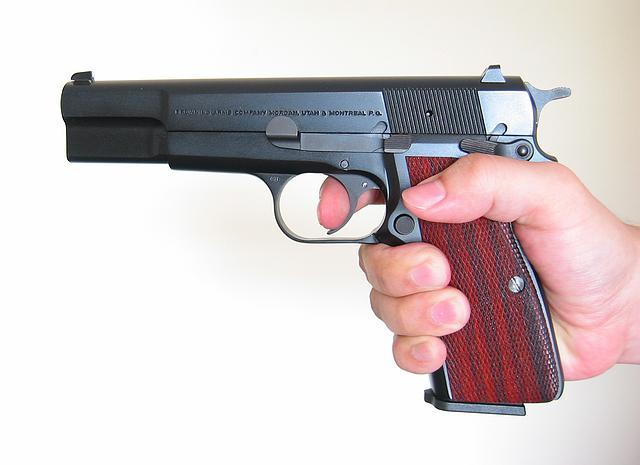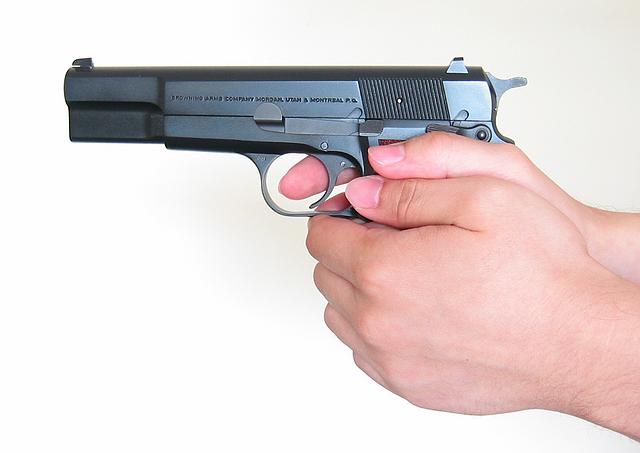
Grip
Your weapon must become an extension of your hand and arm. It should replace your finger in pointing at an object. A firm, uniform grip must be used. Proper grip is one of the most important factors in being able to place multiple shots on your target, quickly.
One-hand grip:
To establish a good grip, form a "V" with the thumb and index finger of
your firing hand. Place the weapon in the V with the front and rear sights
in line with your firing arm. Wrap the lower three fingers of your firing
hand around the pistol grip, putting equal pressure with all three fingers to
the rear. Allow the thumb of the firing hand to rest alongside the weapon
without pressure. Grip the weapon tightly until your hand begins to
tremble, then relax until the trembling stops. At this point, you have
applied the necessary pressure for a proper grip. Place the trigger finger
on the trigger between the tip and first joint so that it can be squeezed
rearward. When firing, your trigger finger must work independently of the
other fingers.

Two-hand grip:
Using both hands allows the shooter to steady the firing hand and provide
maximum support during firing. Two-handed grips are recommended whenever
possible for all handgun firing.
To use a two-handed grip, first put your firing hand on your weapon as described
above. Then put the thumb of your non-firing hand together with the thumb
of your firing hand and wrap the fingers of your non-firing hand around the
fingers of your firing hand.

Warning!
Do not place the non-firing thumb in the rear of the weapon. If you
do, the recoil of the weapon, especially semi-autos, could result in personal
injury.
To continue onto stance, click here.